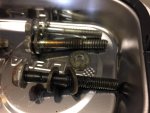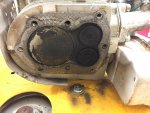cpurvis
Lawn Addict
- Joined
- Aug 25, 2015
- Threads
- 21
- Messages
- 2,256
You might be making the erroneous assumption that because the carburetor is "new" and the engine displays the same symptoms, that the problem lies elsewhere.
You might be overlooking the possibility that the "new" carburetor has exactly the same problem as the old one--a clogged passageway or jet. Chinese carburetors are not known to have the best quality control.
You might be overlooking the possibility that the "new" carburetor has exactly the same problem as the old one--a clogged passageway or jet. Chinese carburetors are not known to have the best quality control.


